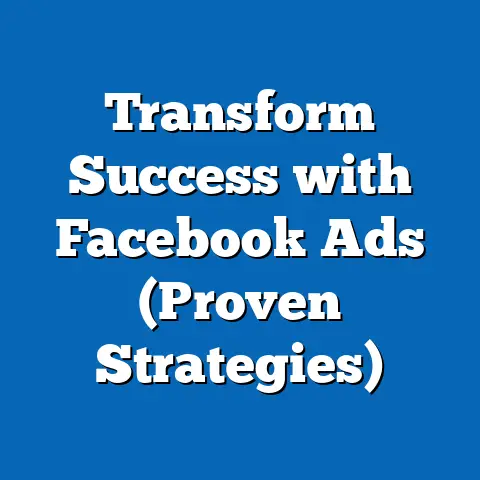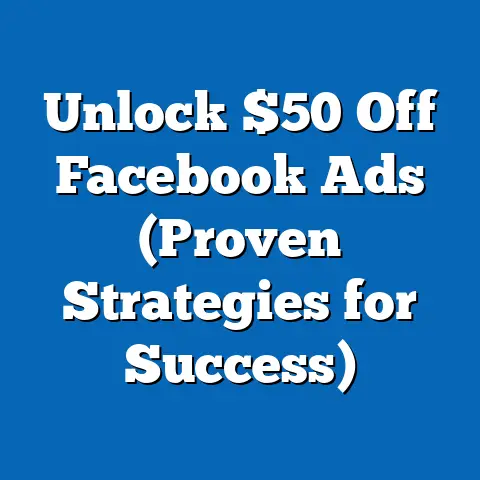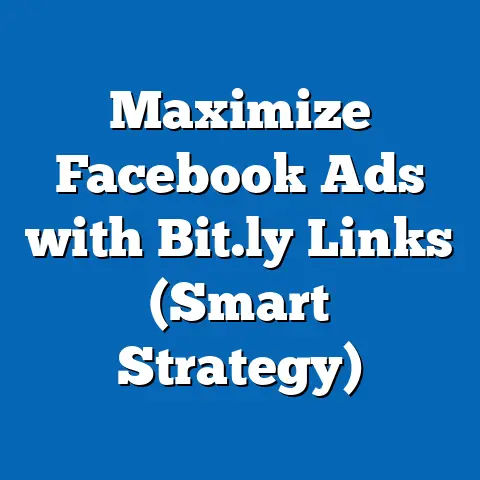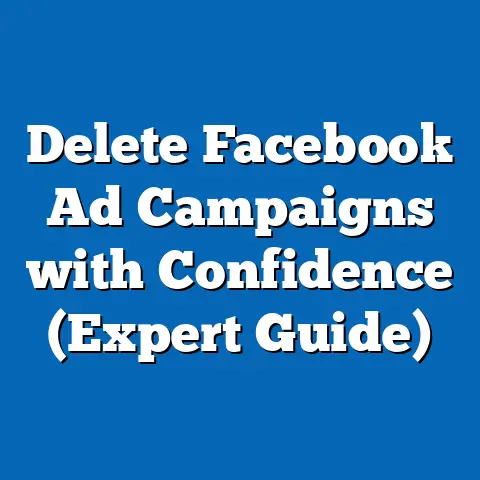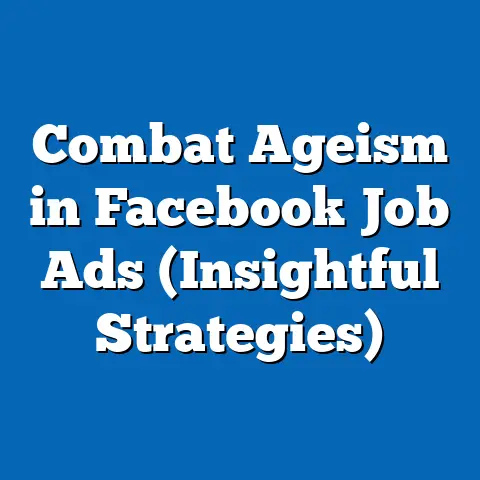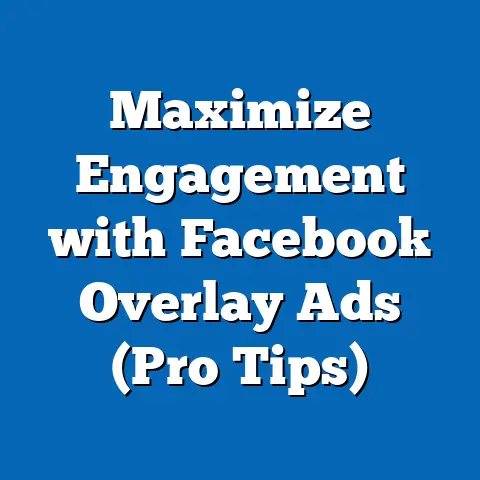Boost Mobile App with Facebook Ads (Proven Strategies)
But building a fantastic eco-friendly app is only half the battle. Getting it discovered in the crowded app stores is a whole other challenge. That’s where Facebook Ads comes in. It’s a powerful tool, and when used strategically, it can significantly boost the visibility and downloads of your mobile app, especially when you’re targeting that increasingly important eco-conscious audience.
I’m going to walk you through the ins and outs of using Facebook Ads to promote your mobile app. We’ll cover everything from understanding the platform to crafting compelling ad content, targeting the right audience, managing your budget, measuring your ROI, and staying ahead of the curve in this ever-evolving digital landscape.
Understanding the Facebook Ads Ecosystem
Let’s start with the basics. Facebook Ads isn’t just one thing; it’s a multi-faceted system that allows you to reach potential users across a range of platforms. This includes Facebook itself, Instagram, and the Audience Network, which extends your reach to other mobile apps and websites. Understanding the nuances of each platform is crucial for effective mobile app marketing.
Facebook, Instagram, and Audience Network: A Quick Overview
- Facebook: The original and still a powerhouse. Facebook is great for reaching a wide demographic and using detailed targeting options based on interests, demographics, and behaviors. I’ve found that Facebook works especially well for apps that cater to a broad audience or those that benefit from community engagement and sharing.
- Instagram: Visually driven and perfect for showcasing your app’s design and user experience. Instagram is ideal for apps that have a strong visual component, such as photo editing apps, games with stunning graphics, or lifestyle apps. I’ve had a lot of success using video ads on Instagram to demonstrate app functionality and user benefits.
- Audience Network: Extends your reach beyond Facebook and Instagram to a network of mobile apps and websites. The Audience Network can be a cost-effective way to reach a wider audience, particularly if you’re targeting users who may not be active on Facebook or Instagram. However, it’s important to monitor performance closely, as the quality of traffic can vary.
The Power of Targeting and Audience Segmentation
One of the biggest strengths of Facebook Ads is its robust targeting capabilities. You can target users based on a wide range of factors, including:
- Demographics: Age, gender, location, education, job title, etc.
- Interests: Hobbies, passions, favorite brands, and activities.
- Behaviors: Purchase history, device usage, travel habits, and more.
- Custom Audiences: Upload your own customer list or create audiences based on website visitors or app users.
- Lookalike Audiences: Find new users who are similar to your existing customers.
For eco-friendly mobile apps, this level of granularity is invaluable. You can specifically target users who are interested in sustainability, environmentalism, green technologies, and related topics. I’ve personally seen campaigns targeting users interested in “zero waste living” or “sustainable fashion” perform exceptionally well for eco-conscious apps.
Pro Tip: Don’t just rely on broad interest categories. Dig deeper and explore more niche interests and behaviors. For example, instead of just targeting “environmentalism,” try targeting “organic gardening,” “veganism,” or “renewable energy.”
Ad Formats: Choosing the Right One for Your App
Facebook Ads offers a variety of ad formats, each with its own strengths and weaknesses. Here are some of the most relevant options for promoting mobile apps:
- Carousel Ads: Showcase multiple images or videos in a single ad. Carousel ads are great for highlighting different features of your app or telling a story about your brand. I’ve used carousel ads to showcase before-and-after transformations with home energy monitoring apps, or to highlight different recipes within a sustainable cooking app.
- Video Ads: Engaging and informative. Video ads are perfect for demonstrating how your app works and showcasing its benefits. I highly recommend creating short, engaging videos that highlight the key features of your app and encourage users to download it. Keep them concise and attention-grabbing.
- Collection Ads: Visually immersive and designed for mobile shopping. Collection ads are ideal for apps that offer a range of products or services. This format allows users to browse your offerings directly from the ad, making it easy for them to find what they’re looking for.
- Single Image Ads: Simple and effective. Single image ads are a great way to showcase your app’s logo or a compelling visual. Make sure your image is high-quality and relevant to your target audience.
Takeaway: Understanding the Facebook Ads ecosystem is the first step towards creating successful campaigns for your mobile app. By leveraging the platform’s targeting capabilities and choosing the right ad formats, you can reach your ideal audience and drive more downloads.
Crafting Compelling Ad Content
Now that you understand the landscape of Facebook Ads, let’s talk about what actually makes people click and download. It’s not enough to just show them your app; you need to create compelling ad content that resonates with their values and motivates them to take action.
The Power of Messaging that Appeals to Eco-Conscious Values
When targeting eco-conscious consumers, your messaging needs to be authentic and genuine. They can spot greenwashing from a mile away, so avoid making exaggerated claims or using vague language. Instead, focus on the specific ways your app contributes to sustainability.
Here are some key messaging strategies I’ve found effective:
- Highlight the environmental benefits: Does your app help users reduce their carbon footprint? Conserve water? Reduce waste? Make sure to clearly communicate these benefits in your ad copy.
- Showcase sustainable features: Does your app use renewable energy? Is it made with recycled materials? Does it support ethical sourcing? Highlight these features to appeal to eco-conscious consumers.
- Use authentic language: Avoid using jargon or technical terms that your target audience may not understand. Instead, use clear, concise language that is easy to understand and relatable.
- Tell a story: Share a story about how your app is making a difference in the world. This can be a powerful way to connect with your target audience on an emotional level. I’ve seen success stories from users using apps to reduce their environmental impact skyrocket engagement.
Engaging Visuals: Resonating with the Target Audience
Visuals are just as important as your ad copy. Choose images and videos that are visually appealing and relevant to your target audience.
Here are some tips for creating engaging visuals:
- Use high-quality images and videos: Make sure your visuals are clear, sharp, and well-lit. Avoid using blurry or pixelated images.
- Showcase your app in action: Demonstrate how your app works and how it benefits users.
- Use natural and organic imagery: Images of nature, landscapes, and sustainable practices can be very effective in appealing to eco-conscious consumers.
- Use color strategically: Green, blue, and earth tones can evoke feelings of sustainability and environmentalism.
Examples of Successful Ad Copy
Let’s look at some examples of successful ad copy for eco-friendly mobile apps:
-
Example 1: Sustainable Shopping App
- Headline: Shop Sustainably and Save the Planet
- Body: Discover eco-friendly products from brands that care. Reduce your carbon footprint with every purchase. Download our app today!
- Call to Action: Download Now
-
Example 2: Home Energy Monitoring App
-
Headline: Lower Your Energy Bill and Reduce Your Carbon Footprint
- Body: Track your energy usage and identify areas where you can save. Our app helps you make smart choices that benefit both your wallet and the planet.
- Call to Action: Get Started
-
Example 3: Waste Reduction App
-
Headline: Reduce Waste and Live a More Sustainable Life
- Body: Find local recycling centers, compost tips, and zero waste recipes. Our app makes it easy to live a more sustainable life.
- Call to Action: Learn More
Example 1: Sustainable Shopping App
- Headline: Shop Sustainably and Save the Planet
- Body: Discover eco-friendly products from brands that care. Reduce your carbon footprint with every purchase. Download our app today!
- Call to Action: Download Now
-
Example 2: Home Energy Monitoring App
-
Headline: Lower Your Energy Bill and Reduce Your Carbon Footprint
- Body: Track your energy usage and identify areas where you can save. Our app helps you make smart choices that benefit both your wallet and the planet.
- Call to Action: Get Started
-
Example 3: Waste Reduction App
-
Headline: Reduce Waste and Live a More Sustainable Life
- Body: Find local recycling centers, compost tips, and zero waste recipes. Our app makes it easy to live a more sustainable life.
- Call to Action: Learn More
Example 2: Home Energy Monitoring App
Headline: Lower Your Energy Bill and Reduce Your Carbon Footprint
Example 3: Waste Reduction App
Headline: Reduce Waste and Live a More Sustainable Life
Takeaway: Crafting compelling ad content is essential for attracting eco-conscious consumers. By focusing on the environmental benefits of your app, using engaging visuals, and writing authentic ad copy, you can create ads that resonate with your target audience and drive more downloads.
Targeting the Right Audience
Creating amazing ad content is useless if you’re showing it to the wrong people. That’s why targeting is so crucial. Facebook Ads offers a wealth of targeting options, allowing you to pinpoint your ideal audience with remarkable accuracy.
Demographics, Interests, and Behaviors: The Building Blocks of Targeting
As I mentioned earlier, Facebook Ads allows you to target users based on a variety of factors. Here’s a closer look at some of the most important targeting options:
- Demographics: Use demographics to target users based on age, gender, location, education, job title, and other demographic factors. This is a great way to narrow down your audience and ensure that you’re reaching the right people.
- Interests: Target users based on their interests, hobbies, favorite brands, and activities. This is a powerful way to reach users who are passionate about sustainability and environmentalism.
- Behaviors: Target users based on their purchase history, device usage, travel habits, and other behaviors. This can be a great way to reach users who are already engaged in sustainable practices.
Identifying and Reaching Eco-Conscious Consumers
So, how do you specifically target eco-conscious consumers on Facebook Ads? Here are some strategies I’ve used successfully:
- Interest Targeting: Target users who are interested in sustainability, environmentalism, green technologies, renewable energy, organic gardening, veganism, zero waste living, and other related topics.
- Behavior Targeting: Target users who have purchased eco-friendly products, donated to environmental charities, or participated in sustainable activities.
- Custom Audiences: Upload your own customer list or create audiences based on website visitors or app users. This is a great way to retarget users who have already shown an interest in your app.
- Lookalike Audiences: Find new users who are similar to your existing customers. This is a powerful way to expand your reach and find new customers who are likely to be interested in your app.
Example: Let’s say you’re promoting a mobile app that helps users track their carbon footprint. You could target users who are interested in “climate change,” “environmental activism,” and “sustainable living.” You could also target users who have purchased carbon offsets or donated to environmental organizations.
Case Studies: Success Stories of Targeted Ads
I’ve seen numerous examples of mobile apps that have successfully used targeted ads to reach their desired audience. Here are a few examples:
- A sustainable fashion app targeted users who were interested in “ethical fashion,” “slow fashion,” and “vintage clothing.” They saw a significant increase in downloads and engagement.
- A renewable energy app targeted users who were interested in “solar power,” “wind energy,” and “energy efficiency.” They generated a high volume of leads and conversions.
- A waste reduction app targeted users who were interested in “zero waste living,” “composting,” and “recycling.” They built a strong community of engaged users.
Takeaway: Targeting the right audience is crucial for the success of your Facebook Ads campaigns. By using the platform’s targeting capabilities to reach eco-conscious consumers, you can significantly increase your app downloads and engagement.
Budgeting and Bidding Strategies
Okay, you’ve got your amazing ad content and you know who you want to reach. Now, let’s talk about money. Setting a budget and choosing the right bidding strategy are essential for maximizing your return on investment (ROI).
Setting a Budget for Maximum Impact
The first step is to determine how much you’re willing to spend on your Facebook Ads campaigns. There’s no one-size-fits-all answer to this question, as it depends on a variety of factors, including:
- Your marketing goals: Are you trying to increase app downloads? Generate leads? Drive sales?
- Your target audience: How large is your target audience? How competitive is the market?
- Your ad budget: How much money do you have to spend on advertising?
I recommend starting with a small budget and gradually increasing it as you see results. This will allow you to test different ad creatives, targeting options, and bidding strategies without breaking the bank.
Pro Tip: Don’t put all your eggs in one basket. Diversify your ad spend across different campaigns and ad sets to test different approaches.
Bidding Strategies: Choosing the Right One for App Downloads
Facebook Ads offers a variety of bidding strategies, each with its own pros and cons. Here are some of the most relevant options for boosting app downloads:
- Cost Per Click (CPC): You pay each time someone clicks on your ad. CPC bidding is a good option if you’re focused on driving traffic to your app store listing.
- Cost Per Impression (CPM): You pay for every 1,000 times your ad is shown. CPM bidding is a good option if you’re focused on increasing brand awareness.
- Cost Per Acquisition (CPA): You pay only when someone downloads your app. CPA bidding is the most direct way to optimize for app downloads, but it requires accurate tracking and attribution.
I typically recommend starting with CPC bidding and then switching to CPA bidding once you have enough data to optimize your campaigns.
Monitoring Ad Performance and Optimizing Spending
Once your campaigns are up and running, it’s important to monitor their performance closely. Pay attention to key metrics like click-through rate (CTR), conversion rate, and cost per acquisition (CPA).
Based on your data, you can make adjustments to your ad creatives, targeting options, and bidding strategies to optimize your spending and improve your results.
Takeaway: Budgeting and bidding strategies are essential for maximizing your ROI on Facebook Ads. By setting a budget that aligns with your marketing goals, choosing the right bidding strategy, and monitoring your ad performance closely, you can drive more app downloads and achieve your desired results.
Measuring Success and ROI
You’ve launched your campaigns, you’re spending money, but how do you know if it’s actually working? Measuring success and ROI is crucial for understanding the effectiveness of your Facebook Ads campaigns and making data-driven decisions.
Key Performance Indicators (KPIs) for App Developers
There are a number of key performance indicators (KPIs) that app developers should track to measure the success of their Facebook Ads campaigns. Here are some of the most important ones:
- Click-Through Rate (CTR): The percentage of people who click on your ad after seeing it. A high CTR indicates that your ad is engaging and relevant to your target audience.
- Conversion Rate: The percentage of people who download your app after clicking on your ad. A high conversion rate indicates that your app store listing is compelling and that your app meets the needs of your target audience.
- Cost Per Acquisition (CPA): The cost of acquiring a new user. A low CPA indicates that your campaigns are efficient and that you’re getting a good return on your investment.
- App Downloads: The total number of app downloads generated by your Facebook Ads campaigns.
- App Engagement: How actively users are using your app after downloading it. This can be measured by metrics like daily active users (DAU), monthly active users (MAU), and session length.
- Customer Lifetime Value (CLTV): The total revenue you expect to generate from a customer over the lifetime of their relationship with your app.
Utilizing Facebook Analytics and Other Tools
Facebook Analytics provides a wealth of data about your app users and their behavior. You can use Facebook Analytics to track key metrics like app downloads, app engagement, and customer lifetime value.
In addition to Facebook Analytics, there are a number of other tools that can help you measure the success of your Facebook Ads campaigns. These tools include:
- Google Analytics: A web analytics tool that can be used to track website traffic and conversions.
- Adjust: A mobile measurement platform that provides detailed data about app installs, app engagement, and revenue.
- AppsFlyer: Another mobile measurement platform that offers similar features to Adjust.
A/B Testing: Continuously Improving Performance
A/B testing is a powerful technique for improving the performance of your Facebook Ads campaigns. It involves creating two versions of an ad (A and B) and then showing them to different segments of your audience. By comparing the performance of the two versions, you can identify which one is more effective and then use that version in your campaigns.
I highly recommend A/B testing different ad creatives, targeting options, and bidding strategies to continually improve the performance of your Facebook Ads campaigns.
Takeaway: Measuring success and ROI is essential for understanding the effectiveness of your Facebook Ads campaigns and making data-driven decisions. By tracking key performance indicators, utilizing Facebook Analytics and other tools, and A/B testing different ad creatives and targeting options, you can continually improve your performance and maximize your return on investment.
Adapting to Trends and Changes
The world of social media marketing is constantly evolving. What works today may not work tomorrow. That’s why it’s so important to stay updated with the latest trends and changes and adapt your strategies accordingly.
The Dynamic Nature of Social Media Marketing
Facebook Ads is a dynamic platform that is constantly changing. Facebook regularly updates its algorithm, ad policies, and targeting options. These changes can have a significant impact on the performance of your Facebook Ads campaigns.
It’s important to stay informed about these changes and adapt your strategies accordingly. You can do this by:
- Following industry blogs and publications: Stay up-to-date with the latest news and trends in social media marketing.
- Attending industry conferences and webinars: Learn from experts and network with other marketers.
- Experimenting with new features and strategies: Don’t be afraid to try new things and see what works.
Staying Updated with Facebook’s Algorithm Changes and Ad Policies
Facebook’s algorithm is the secret sauce that determines which ads are shown to which users. The algorithm is constantly changing, so it’s important to stay up-to-date with the latest updates.
Facebook also has a set of ad policies that you must adhere to when creating your ads. These policies cover a wide range of topics, including prohibited content, targeting restrictions, and ad formatting requirements.
Violating Facebook’s ad policies can result in your ads being disapproved or your account being suspended. It’s important to familiarize yourself with these policies and ensure that your ads comply with them.
Actionable Tips for Staying Ahead of Trends
Here are some actionable tips for mobile app marketers to stay ahead of trends and adapt their strategies accordingly:
- Monitor your competitors: See what your competitors are doing and learn from their successes and failures.
- Track industry trends: Stay up-to-date with the latest news and trends in the mobile app industry.
- Experiment with new features and strategies: Don’t be afraid to try new things and see what works.
- Analyze your data: Track your key performance indicators and use the data to make informed decisions about your campaigns.
- Be flexible: Be prepared to adapt your strategies as needed.
Takeaway: Social media marketing is a dynamic field that is constantly evolving. By staying updated with the latest trends and changes, you can ensure that your Facebook Ads campaigns remain effective and that you’re getting the best possible return on your investment.
Conclusion
Boosting your mobile app with Facebook Ads is a powerful strategy, especially when you’re focused on reaching eco-conscious consumers. I’ve covered a lot of ground in this guide, from understanding the Facebook Ads ecosystem to crafting compelling ad content, targeting the right audience, managing your budget, measuring your ROI, and adapting to trends and changes.
The key takeaway is that effective Facebook Ads campaigns are not just about throwing money at the platform; they’re about understanding your audience, crafting compelling messaging, and continuously optimizing your strategies.
By aligning your marketing with the values of eco-conscious consumers, you can not only boost your app downloads but also create a positive impact on the world.
I encourage you to experiment with the strategies outlined in this guide and to continue learning and adapting in the fast-paced world of digital marketing. The potential for mobile app developers to make a difference while achieving their business goals is immense, and Facebook Ads can be a powerful tool in that journey. So, go out there, create amazing ads, and make a positive impact!

